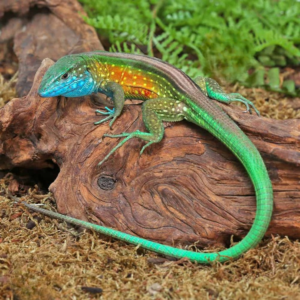
How to Maintain Humidity for Tropical Lizards: A Practical Guide for Healthy Reptile Habitats
Tropical lizards like chameleons, geckos, and anoles rely heavily on proper humidity levels to stay healthy. Without enough moisture in the air, these reptiles can suffer from poor shedding, respiratory infections, and chronic dehydration. If you’re wondering how to maintain humidity for tropical lizards in your enclosure, this guide will walk you through the tools, techniques, and daily habits needed to create a balanced and safe habitat.
Why Humidity Matters for Tropical Lizards
Tropical lizards come from humid environments such as rainforests and jungle canopies. In captivity, recreating this humidity is essential to support:
-
Proper skin shedding
-
Respiratory health
-
Hydration and kidney function
-
Comfortable thermoregulation
Failing to maintain the right humidity range typically 60 to 80 percent, depending on the species can quickly lead to health issues. According to The Spruce Pets, consistent humidity is just as important as temperature control for many tropical reptiles.
How to Monitor Humidity Accurately
Before you make adjustments, make sure you’re monitoring correctly:
-
Use a digital hygrometer for accurate readings. Analog meters can give false results.
-
Place the hygrometer at lizard level, not near the heat source, to reflect true living conditions.
-
Check humidity twice a day, once in the morning and once in the evening.
Effective Ways to Maintain Humidity for Tropical Lizards
1. Misting
Manual or automatic misting is one of the simplest ways to add moisture:
-
Use a spray bottle to mist the enclosure 2 to 4 times a day.
-
For better consistency, consider an automatic misting system like the Exo Terra Monsoon.
-
Always use dechlorinated or distilled water to avoid chemical buildup.
2. Live Plants
Adding live tropical plants can help increase and stabilize humidity:
-
Great options include pothos, bromeliads, and ficus.
-
Plants release moisture through transpiration and also offer natural hiding spots.
3. Humid Hides
Create a hide box filled with moist sphagnum moss or coconut fiber. This helps lizards self-regulate humidity when needed.
-
Place the hide in a shaded area.
-
Mist the moss daily to keep it damp but not soaked.
4. Substrate Choice
Moisture-retaining substrates can help regulate humidity levels:
-
Use coconut husk, cypress mulch, or eco earth.
-
Avoid sand or gravel, which hold little moisture.
5. Reduce Ventilation Where Appropriate
Too much airflow can dry out the enclosure. Cover part of the mesh lid with plastic wrap or Plexiglas to help trap humidity without affecting ventilation too much.
6. Use a Fogger or Humidifier
Ultrasonic foggers and room humidifiers are effective for maintaining ambient humidity especially in dry climates or during winter months.
Want to build the perfect environment from day one?
Explore our available tropical lizards, raised in ideal habitats and ready for new homes.
See Available Reptiles
Troubleshooting Humidity Issues
If you’re struggling to maintain ideal humidity:
-
Check for air leaks in the enclosure.
-
Move the tank away from heating vents or windows.
-
Increase misting frequency or add another water dish.
-
Upgrade your enclosure to one designed for tropical species.
Final Thoughts
Learning how to maintain humidity for tropical lizards is crucial for any responsible reptile owner. With the right tools, regular monitoring, and a few natural solutions like live plants or humid hides, you can easily mimic their native climate and prevent common health issues.
Looking to add a tropical lizard to your home?
Our hand-raised, healthy lizards are kept in species-appropriate enclosures with monitored humidity, lighting, and diet.
Browse Available Tropical Lizards
